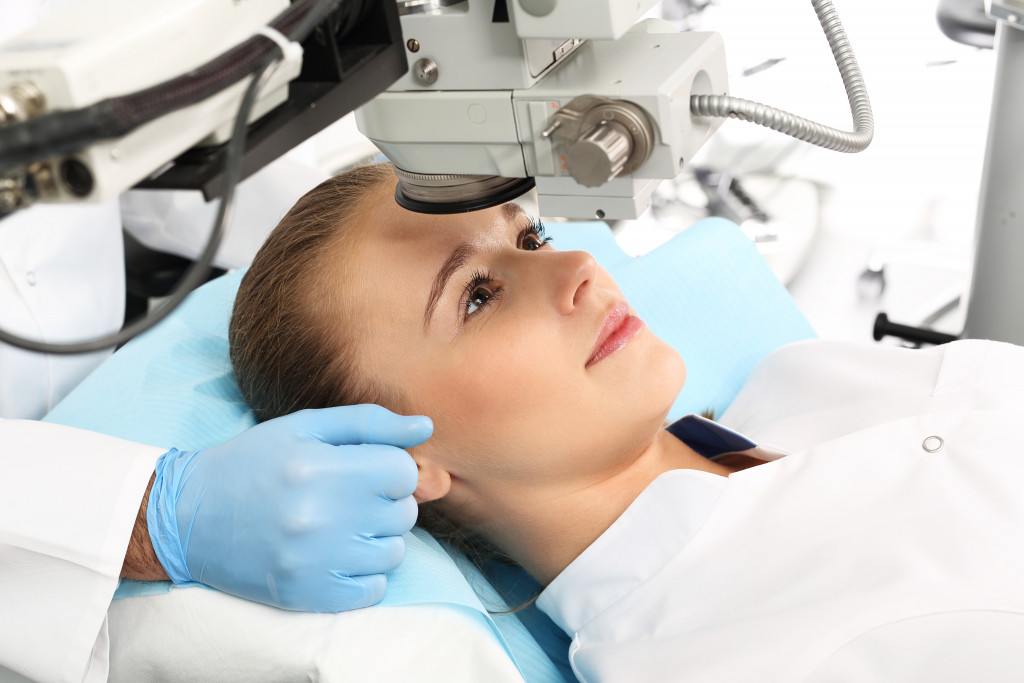Being crossed-eyed, or strabismus is a condition in which the eyes are not aligned and point in different directions. If left untreated, this can cause vision problems and even lead to permanent vision loss. It affects people of all ages, with about 4% of Americans having it. The symptoms can range from mild to severe. Fortunately, there are several treatments available for this condition. Here’s a look at what you need to know about being crossed-eyed and how it can be treated.
What Causes Crossed Eyes?
Several factors can cause crossed eyes. Here are some of the most common risk factors for this particular disorder:
Genetics
Research has shown that genetics may play a role in the development of strabismus. If one or both parents have strabismus, their child will likely develop the condition. Therefore, having a family history of strabismus is a significant risk factor for developing this vision issue.
Premature Birth
Babies born prematurely are more likely to develop strabismus than babies born full-term. This is because premature babies’ eyes and vision may not have had time to develop fully before birth. In addition, premature babies are at higher risk for developing other eye conditions such as amblyopia (or lazy eye). Therefore, if your baby was born prematurely, keeping a close eye on their vision development during infancy and early childhood is essential.
Injuries or Illnesses
Head injuries or illnesses such as meningitis can cause strabismus because they can damage the nerves that control eye movement. Fortunately, these types of strabismus are usually temporary and correct themselves once the underlying injury or illness has been treated. However, it is essential to monitor your child’s vision carefully if they sustain any head trauma or become ill so that any issues can be identified immediately.
How Is Cross-Eyed Diagnosed?
Crossed eyes can often be diagnosed through a comprehensive eye exam. Your doctor will assess your eyes for any signs of misalignment and use special equipment to measure the curvature of your cornea, as well as check for any refractive errors that could be causing your symptoms. In addition, your doctor may perform tests such as an electroretinogram (ERG) or visual evoked potentials (VEP) to determine if you have any underlying neurological conditions that could be contributing to your symptoms.

Treatment Options for Cross-Eyed Patients
Several treatment options are available for cross-eyed patients depending on the severity of their condition.
Eyeglasses
The most common treatment for milder forms of crossed eyes is corrective eyeglasses. These can help to align your eyes and reduce symptoms such as blurred vision and headaches. However, these eyeglasses should be fixed or adjusted annually. Various repair and adjustment services for eyeglasses can help ensure that your corrective eyeglasses continue to provide the best possible results. This is to ensure that the prescription of the eyeglasses remains accurate.
Surgery
One of the most common treatments for crossed eyes is surgery. This procedure is typically recommended if the patient’s vision has been affected by their condition and they cannot correct it through eyeglasses or contact lenses. Surgery involves realigning the muscles surrounding the eye to point in the correct direction. The surgery takes about an hour and usually requires a few days of recovery. It should be noted. However, that surgery is not always successful and may require additional procedures if it does not resolve the issue.
Eye Patching or Atropine Drops
Another treatment option for crossed eyes is patching or atropine drops—this method is often used when surgery is not an option due to health reasons or cost constraints. Patching involves covering one eye with a patch for several hours a day to force the other eye to work harder—the idea being that, over time, this will help strengthen its alignment with the other regard and thus improve depth perception and reduce double vision caused by having two misaligned eyes pointing in different directions. Atropine drops work similarly, but instead of blocking out light with a patch, they blur vision so that one eye must work harder than usual to focus on objects correctly—this causes it to align with its partner eye over time.
Crossed eyes can impact people’s quality of life if left untreated – ranging from mild discomfort when focusing on near objects to permanent loss of vision in some cases! Several options are available for treating this condition, depending on its severity. So don’t hesitate to seek medical attention if you suspect you may have crossed eyes! With proper treatment, you should soon experience improved vision and better overall comfort when looking around at objects near or far away!


